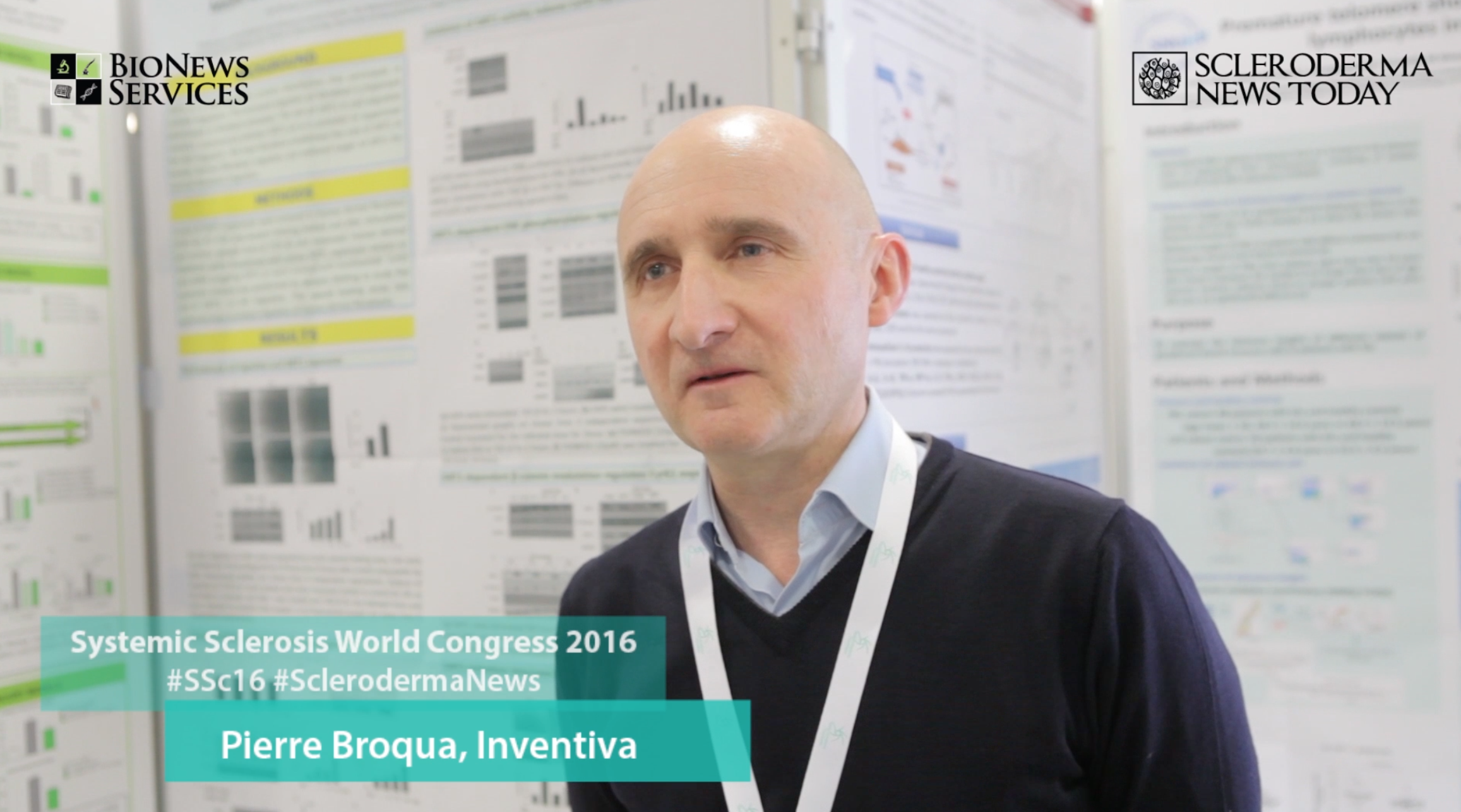Inventiva’s Potential New Systemic Sclerosis Therapy Discussed in Interview With Lead Investigators at SSc World Congress
Written by |

Inventiva, a drug discovery company focused on treatments for fibrosis, oncology, and rare diseases, discussed one of its most advanced clinical products, IVA337, a new drug candidate able to act on several components of the fibrotic process and on several organs, representing a potential therapy for systemic sclerosis.
The company was at the 4th Systemic Sclerosis World Congress in Lisbon, Portugal, last week, where Scleroderma News correspondent Ana de Barros, PhD, interviewed Pierre Broqua, the company’s chief scientific officer and co-founder, and its lead investigator, Yannick Allanore.
Inventiva said IVA337 is able to activate the three PPAR (peroxisome proliferator-activated receptor) isoforms: alpha, delta and gamma, which are nuclear receptors involved in the fibrotic process.
IVA337 has anti-fibrotic properties, and its efficacy has been demonstrated in several lab and in vivo preclinical studies, where the drug was shown to induce the regression of pre-existing fibrotic damage in the skin and in the liver, and to prevent further fibrosis development.
 Inventiva is targeting liver and skin fibrosis where results with IVA337 have been promising. The company is concentrating its efforts in two relevant indications with high unmet medical needs: systemic sclerosis and non-alcoholic steato-hepatitis (NASH).
Inventiva is targeting liver and skin fibrosis where results with IVA337 have been promising. The company is concentrating its efforts in two relevant indications with high unmet medical needs: systemic sclerosis and non-alcoholic steato-hepatitis (NASH).
For the treatment of systemic sclerosis, Inventiva is conducting a placebo-controlled Phase 2b clinical trial (FASST) to assess the therapeutic effects of IVA337. The primary endpoint of the trial will be the mean change of the MRSS (Modified Rodnan Skin score) from baseline to 48 weeks.
Based on the good tolerability and safety profile previously reported in Phase 1 and Phase 2a studies, Broqua said the company is “confident that they can demonstrate efficacy in patients with acceptable side effects.”
Allanore said this “proof-of-concept study is focusing on skin involvement, but during the trial, of course all the other potential organ involvements will be recorded — for example, pulmonary function evaluation to evaluate whether lung fibrosis may develop or change during the trial.”
For potential participants in the FASST trial, Allanore said that the novel mechanism of action of IVA337 compared to other therapies, its good safety profile, and a combined effort has resulted in a “very recruitable trial” where researchers are “allowing the use of classical immunosuppressants, and IVA337 would be used on top of the immunosuppressants, which is facilitating the recruitment of the patients for such a trial.”
The complete Scleroderma News interview with Broqua and Allanore can be accessed through this link.





